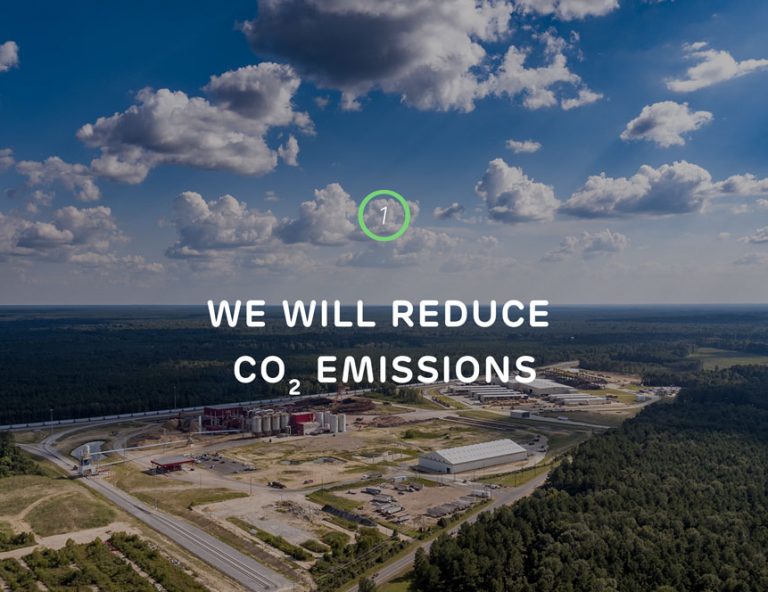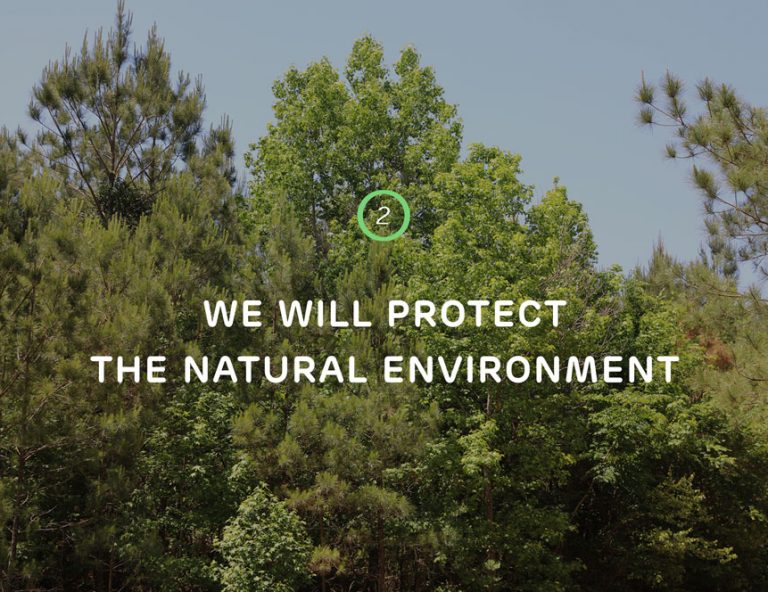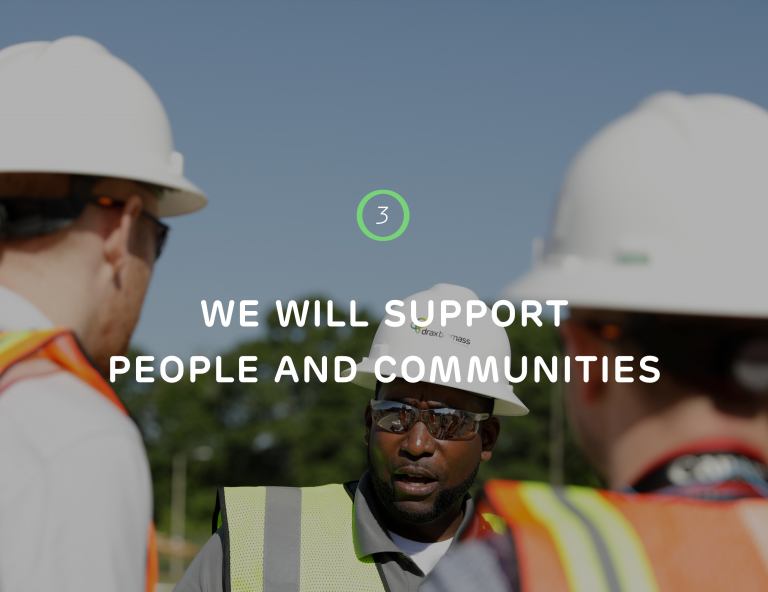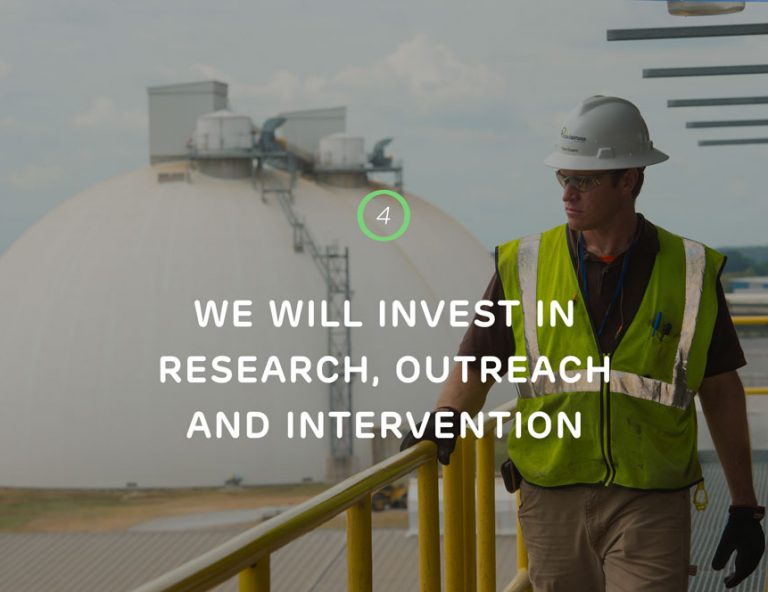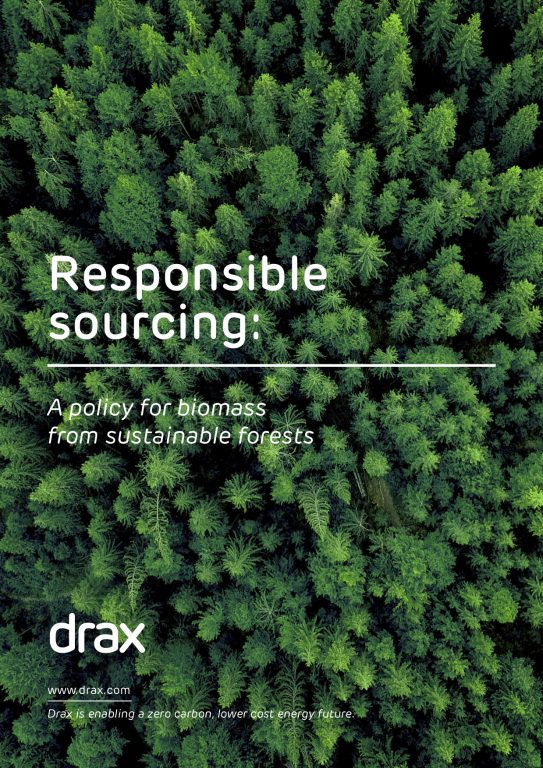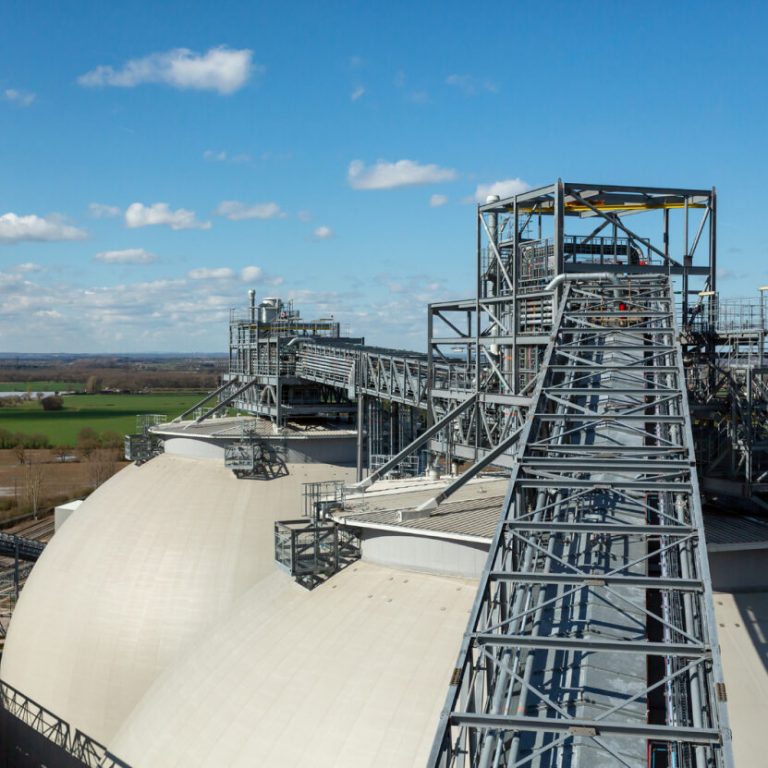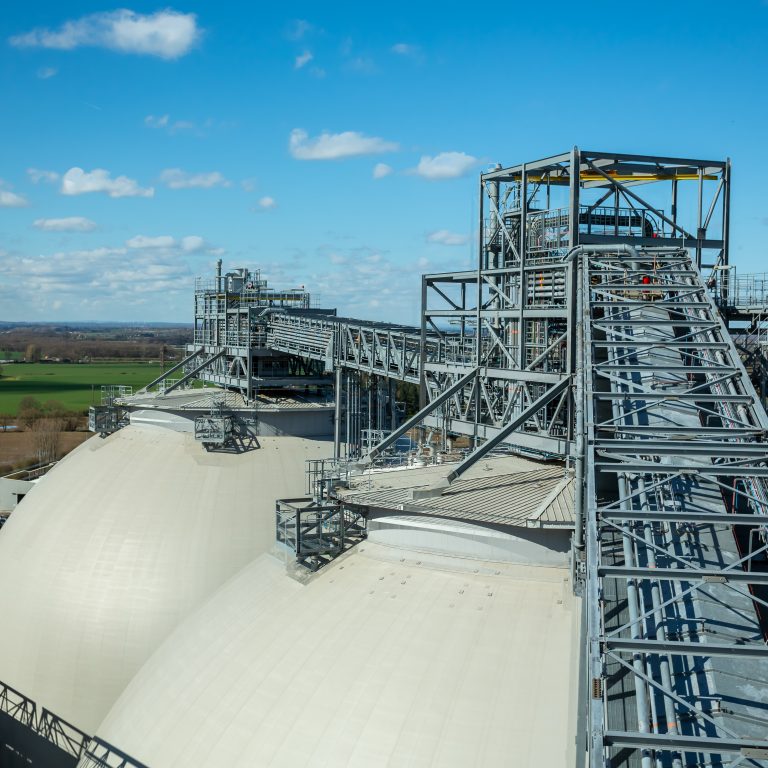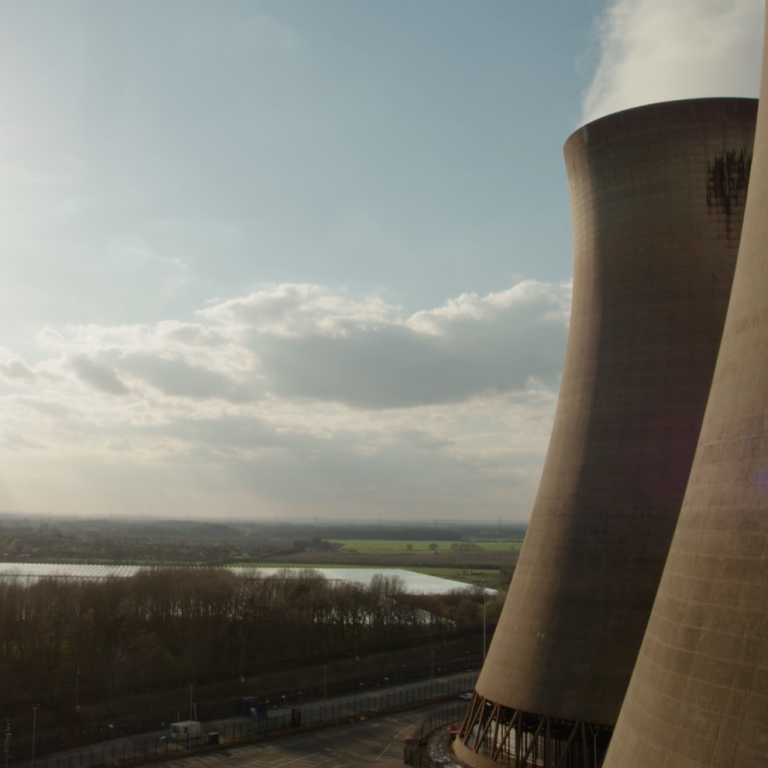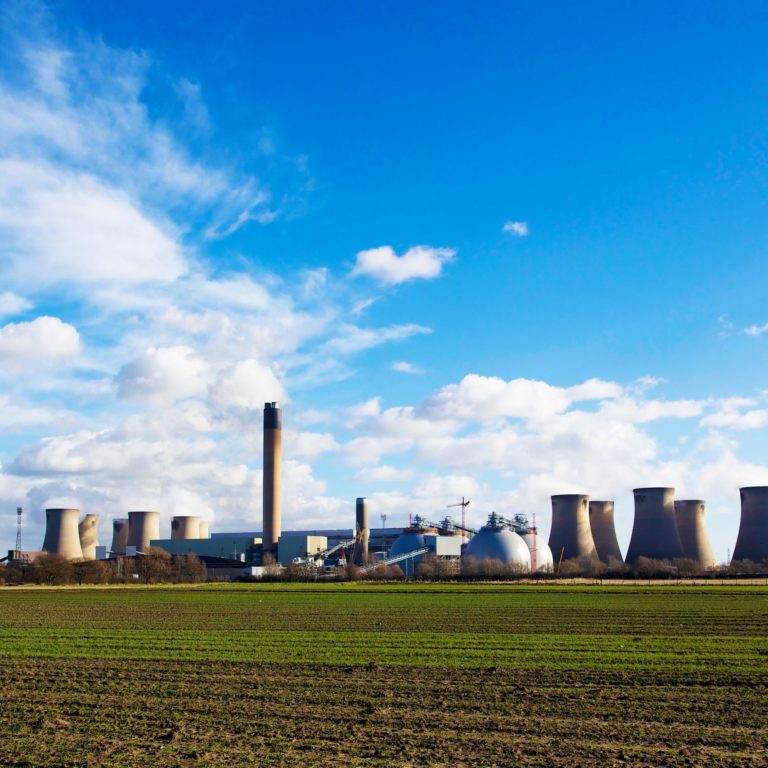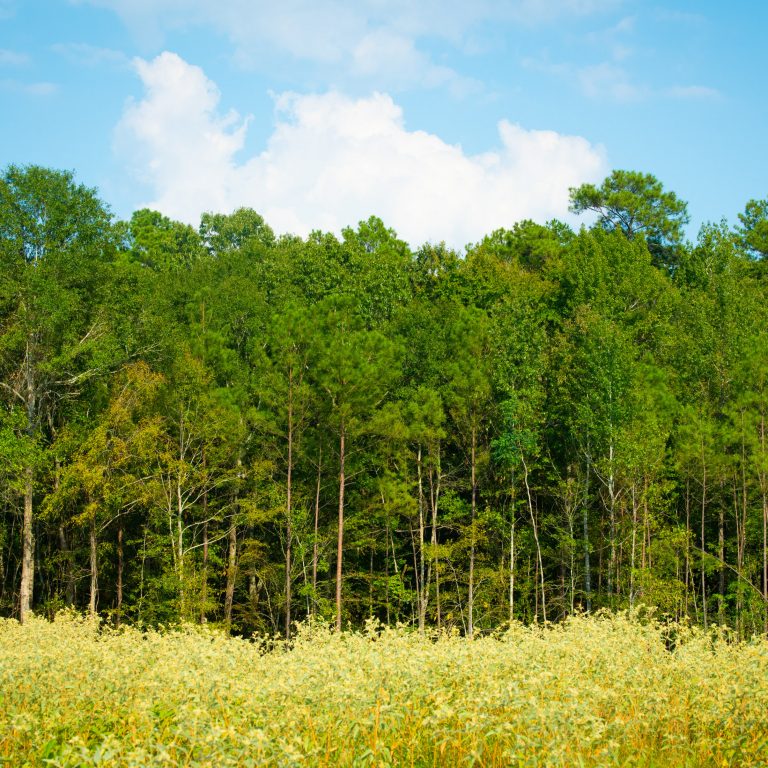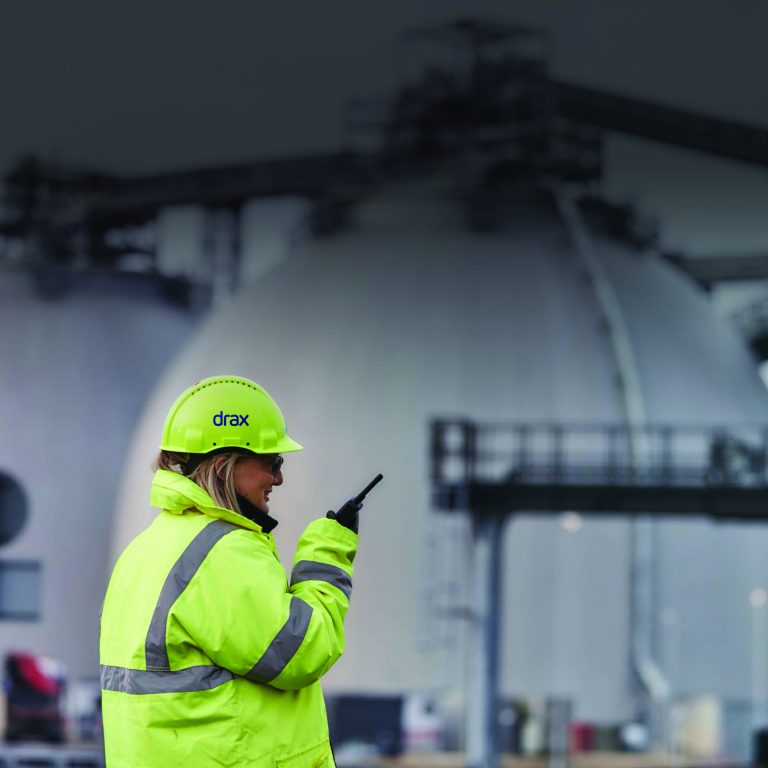Responsible Sourcing
Chapter 1:
Responsible Sourcing
Sustainably sourced forest biomass is at the heart of our purpose: Enabling a zero carbon, lower cost energy future.
In transforming two-thirds of Drax Power Station to use forest biomass instead of coal, we are playing a crucial role in decarbonising the UK’s energy system.
By supplying the country with flexible, affordable and renewable power now and looking to a future with bioenergy carbon capture and storage (BECCS), Drax is at the heart of the energy transition – central to a net zero UK by 2050. Today, we produce enough renewable electricity to power four million homes using biomass – more than any other power generator in the country.
As Drax – and the nation – powers past coal, our sustainably-sourced forest biomass can do more to accelerate the decarbonisation of the UK’s economy and put the country at the global vanguard of the technology needed to combat the climate change crisis.
By pioneering ground-breaking BECCS technology, we want to become the world’s first carbon negative power station. This will place the UK at the centre of global efforts to develop negative emissions technology at scale. The Intergovernmental Panel on Climate Change (IPCC) and the UK Committee on Climate Change (CCC) have recognised these steps which as vital to meeting the UK’s Paris Agreement commitments.
Sustainably sourced forest biomass is at the heart of our purpose: Enabling a zero carbon, lower cost energy future.
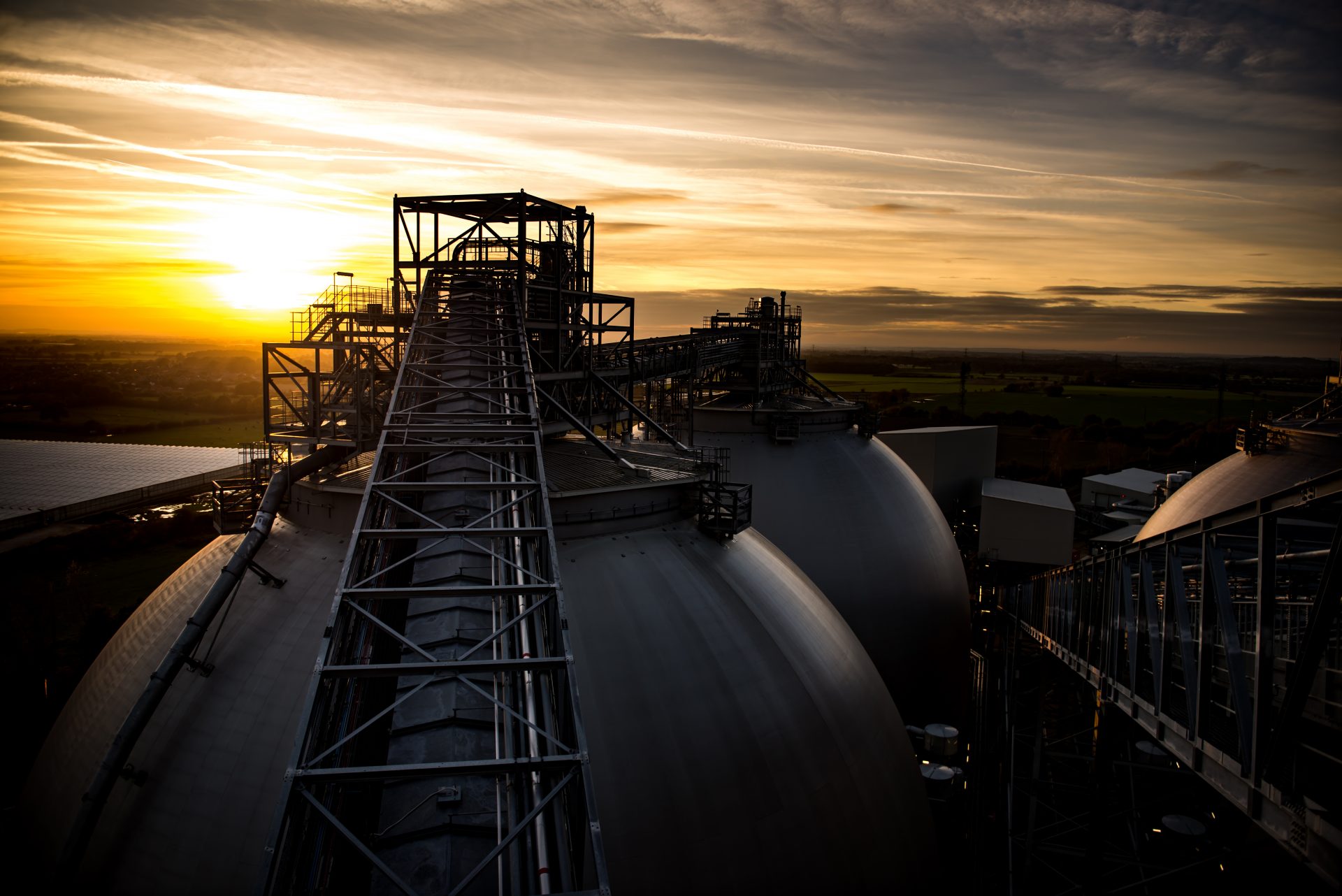
Today, we produce enough renewable electricity to power four million homes – more than any other power generator in the UK.
The benefits of forest biomass
At Drax we use sustainably-sourced wood pellets from working forests, primarily in the US South but also in Europe, Canada and South America, to generate low-carbon, renewable electricity.
Biomass delivers both a decarbonised economy and healthy forests.
Managed forests can absorb more carbon:
- Managed forests often absorb more carbon than forests that are left untouched: increasing sustainable harvesting can lead to more investment in woodland, better growth, greater carbon storage and stronger communities.
Healthy demand for wood contributes to growing forests:
- Drax sources wood from sustainably-managed forests, contributing to increasing forest growth locally and regionally.
Surplus growth has quadrupled in the US South:
- Over the last 25 years, the US South has not only increased its total wood supply, but the surplus annual growth each year has quadrupled.
Chapter 2:
Our Biomass Sustainability Commitments
Our biomass sustainability commitments are driven by our values: To deliver positive impact for the climate, environment and for the communities in which we operate.
Chapter 3:
Reducing Carbon Dioxide Emissions
We are committed to ensuring the biomass we use makes a positive contribution to tackling the climate change crisis and fulfilling the UK’s Paris Agreement targets.
We will continue to reduce emissions across our supply chain where possible, through investment in rail infrastructure instead of road haulage and by partnering with organisations like the Smart Green Shipping Alliance.
A recent report by Forest Research – the UK’s principal organisation for forestry and tree-related science − identified sourcing practices that maximise the positive carbon contribution sustainable biomass can deliver.
Our sourcing choices are led by these recommendations. In order to ensure our biomass reduces CO2 emissions in the most effective way possible, at Drax we commit to:
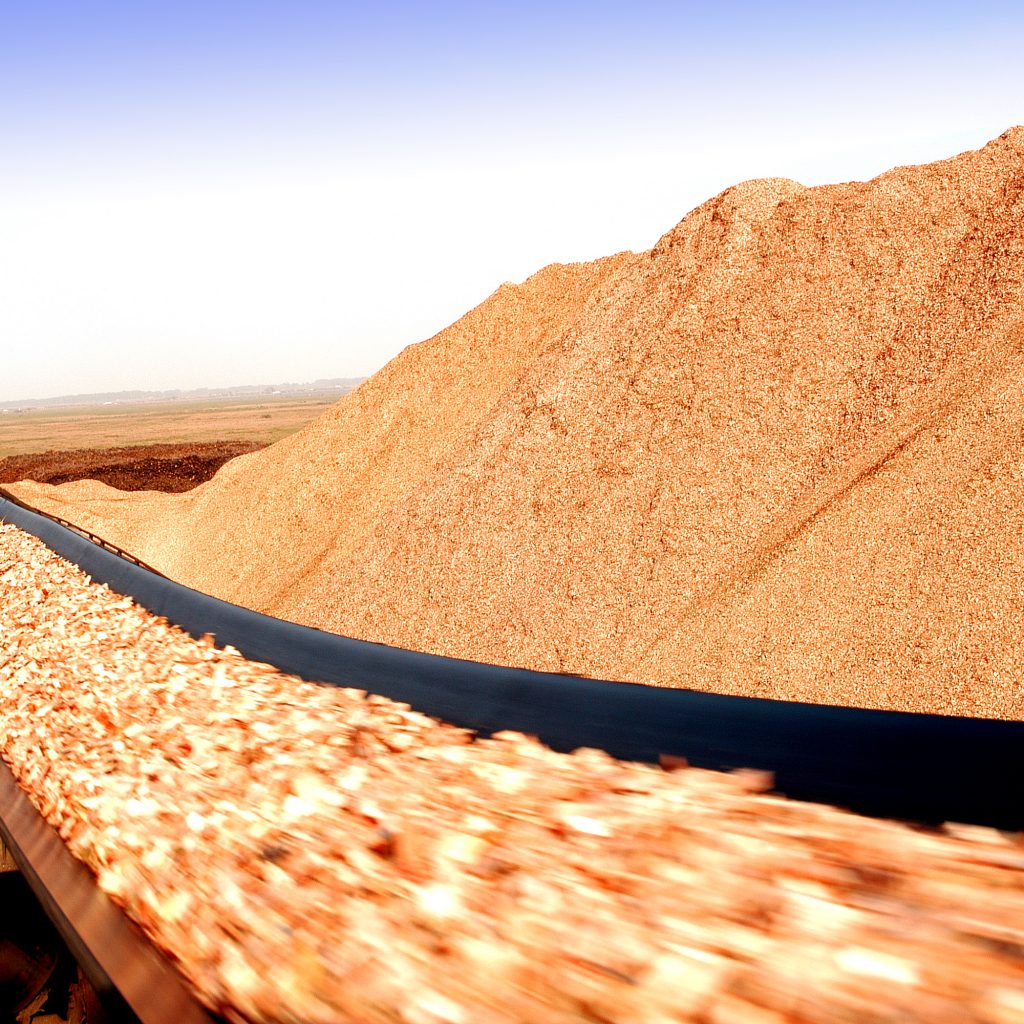
Woodchips on a conveyor at a wood pellet plant
Maximising carbon benefits
Using:
- Responsibly sourced sawmill residues.
- Forest residues from regions with high rates of decay, or where this material is extracted to roadside as part of standard harvesting practice.
- Thinnings that improve the growth, quality or biodiversity value of forests.
Only using roundwood that:
- Helps to maintain or improve the growing stock, growth rate and productivity of forests.
- Helps to improve the health and quality of forests, for example by using storm, pest or fire damaged wood.
- Is not merchantable for use as saw-timber products.
Not using:
- Biomass that drives harvesting decisions that would adversely affect the long-term potential of forests to store and sequester carbon.
- Biomass that increases harvesting above the sustainable capacity of forests.
- Biomass that displaces solid wood product markets.
- Biomass that comes from stumps.
Chapter 4:
Guided by Science
We will keep our sourcing guidelines under review by following the latest science and continually developing best practices.
Our technical advisory group – an independent group of scientists, academics and civil society – will help us determine future sourcing choices in line with new evidence and scientific research so we continue to improve our practices as science evolves.
Establishing an independent advisory board
Drax has established an Independent Advisory Board of scientists, civil society and leaders in the field of sustainability to provide impartial advice on sustainable biomass and its role in Drax’s transition to net zero emissions.
The Independent Advisory Board will provide advice on feedstock options, forest science and how Drax can optimise carbon benefits. The group will also give advice on the role of biomass in Drax’s climate change mitigation activities and in supporting the transition to a net zero energy system. It will also share insights on the societal expectations for responsible and sustainable biomass. The group will feedback and make public recommendations on Drax’s sustainable biomass approach and performance.
Drax is establishing an Independent Advisory Board of scientists, civil society and leaders in the field of sustainability to provide impartial advice on sustainable biomass and its role in Drax’s transition to net zero emissions.
Chapter 5:
Protecting the Natural Environment
We recognise our duty to keep forests thriving, to respect the many benefits they bring as carbon sinks and areas of recreation, as well as their critical role in fostering biodiversity.
We work with our suppliers to ensure the biomass we use contributes to the protection and enhancement of the natural environment.
We will further develop an evidence base to demonstrate that our biomass meets the following commitments:
Our commitment to protect the natural environment
When sourcing wood pellets we will:
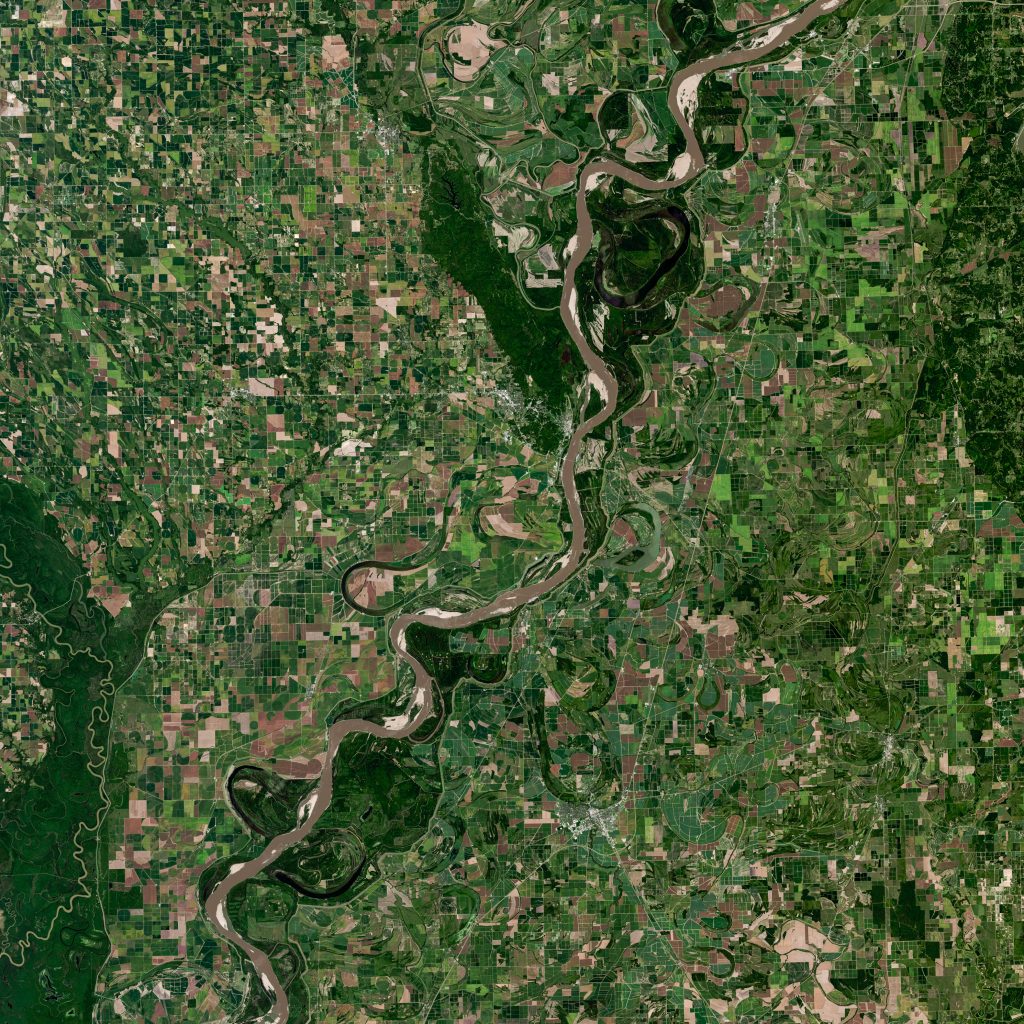
Mississippi river from Landsat satellite. Elements of this image furnished by NASA.
- Avoid damage or disturbance to high carbon forest and soils.
- Avoid damage or negative impact to designated or known sensitive sites or high biodiversity areas.
- Avoid deforestation or degradation of the forest resource.
- Avoid being the cause of direct or indirect land use change, which would lead to an adverse climate impact.
- Maintain the protective functions of forests and ecosystem services, including following best practice for protection of water and soil quality.
- Implement practices which help to reduce the risk of forest fires, pests and diseases.
- Ensure that our suppliers have appropriate systems to track and trace the material that they buy, back to the forest of origin.
The biomass sustainability story
Chapter 6:
Building a Robust Evidence Base
Technology is changing the way we can measure our impact on the natural environment.
New and developing technologies, such as remote sensing are enabling innovation and improving the availability and understanding of data, leading to a more accurate picture of forest health. Coupled with continued monitoring and investment in scientific research, we are committed to building a better understand of our impact on the natural environment.
Our commitment to building a robust evidence base
We will:
- Fund and support science in areas where there is no consensus.
- Work with independent experts to improve monitoring and reporting.
- Use established certification where appropriate, and work with certification schemes to improve the quality and rigour of certification.
- Employ new technologies, such as remote sensing, to assist in evidencing our commitments.
- Improve our transparency through expanding the type and quality of data available on our websites.
Chapter 7:
Supporting People and Communities
From state-owned forests, to small holdings and from the US Southeast to the Baltic States, forest owners, forest workers and communities in our sourcing areas are bound by their common reliance on forests for employment, wellbeing and quality of life.
As part of our duty to support the communities in the areas we source from, we will ensure we buy biomass responsibly.
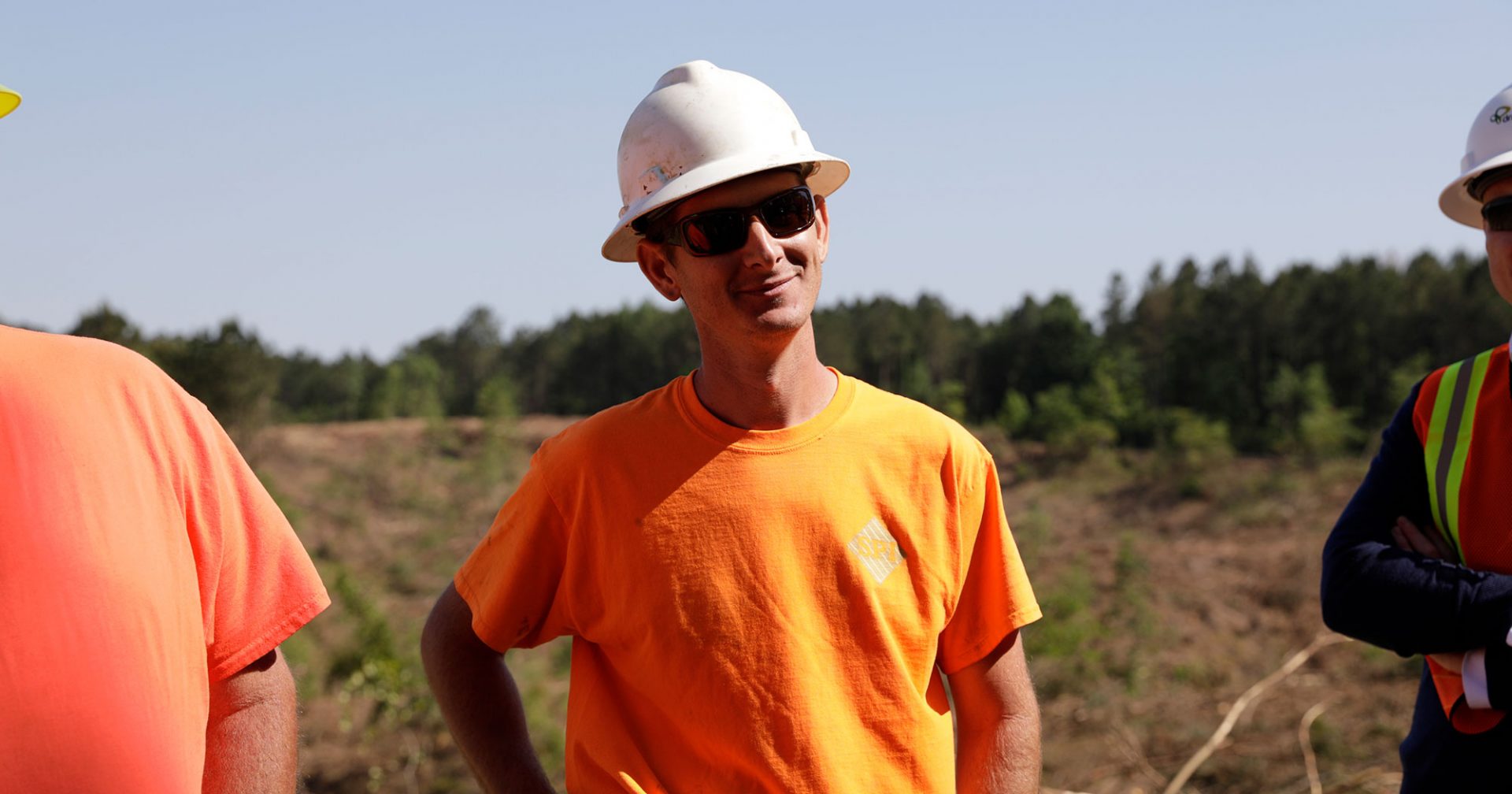
We work with our suppliers to ensure the biomass we use contributes to the protection and enhancement of the natural environment.
Our commitment to supporting people and communities
We will:
- Promote and ensure respect for human rights through all levels of our supply chains, including safeguarding the labour rights of workers and not engaging in any form of discrimination, nor compulsory labour or child labour.
- Verify that appropriate safeguards are in place to protect health and safety in forests and pellet mills.
- Verify that legal, customary and traditional tenure and use rights of indigenous people and local communities related to forests, are identified, documented and respected.
- Verify that food and water supplies, or the subsistence needs of local communities, are not compromised due to forest biomass sourcing.
- Verifying that our sourcing contributes to local prosperity.
- Ensure that all biomass used is fully compliant with international and local legislation.
Chapter 8:
Research, Outreach and Intervention
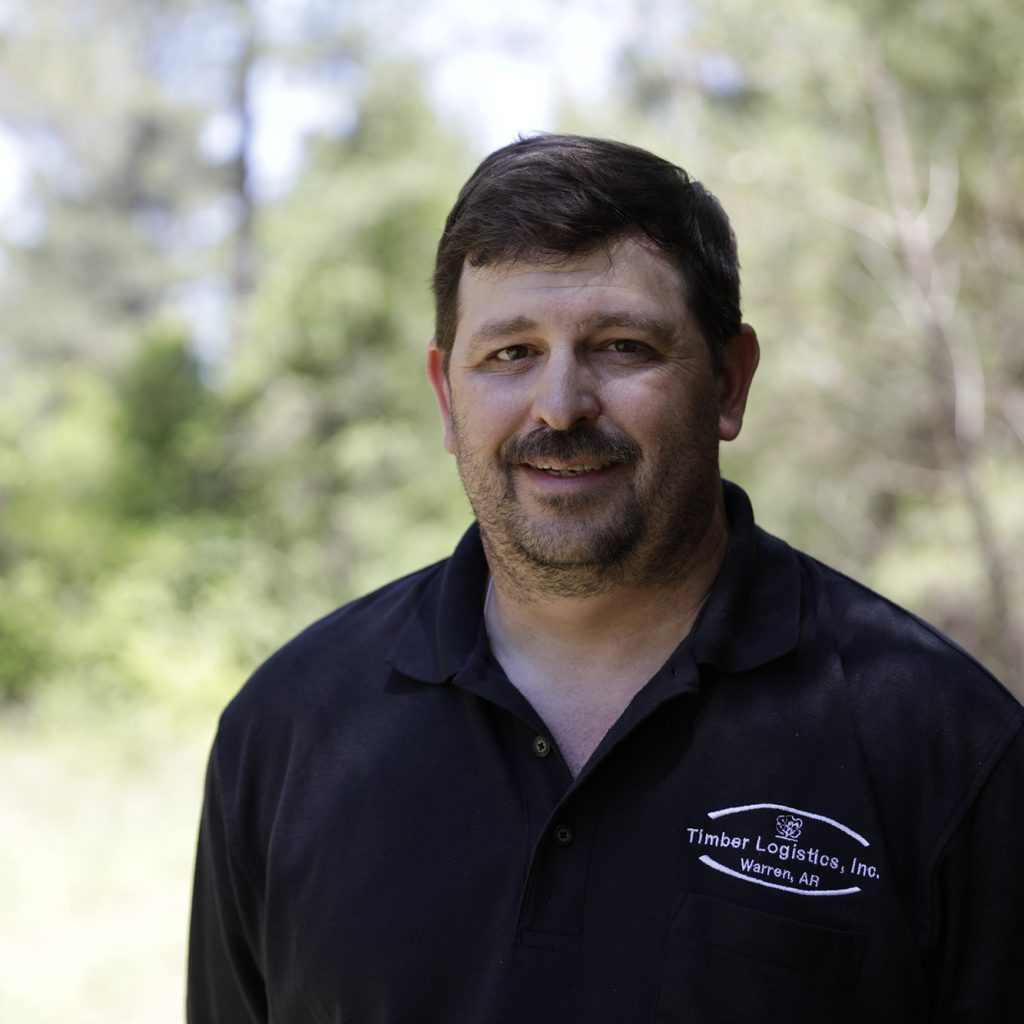
We look to give a voice to forest communities through active engagement and stakeholder consultation.
The strength of our collaboration with others will improve the sourcing choices we make. We are committed to working with governments, non-governmental organisations, academia and other stakeholders to continually improve our biomass sourcing and develop best practices.
Our commitment to research, outreach and intervention
We will:
- Contribute to academic and practical research on the most efficient and effective use of sustainable biomass for mitigating climate change.
- Work with governments and suppliers, as well as local and national stakeholders to better understand the impact of biomass demand on forest landscapes and develop future actions and interventions to improve performance.
- Give a voice to forest communities, through active engagement and stakeholder consultation.
- Identify and act on opportunities for improvement within our supply regions.
Our Partnership with Earthworm
We have partnered with the not-for-profit organisation Earthworm to draw on their responsible sourcing expertise to support our efforts. We are piloting a programme of remote sensing derived and quantified metrics under a programme called Healthy Forest Landscape, that will offer further transparency on our supply catchment impacts. We are also developing a proactive and selective intervention programme addressing issues beyond regulatory requirements.
Please visit our appendix for detailed explanations on our Responsible Sourcing.
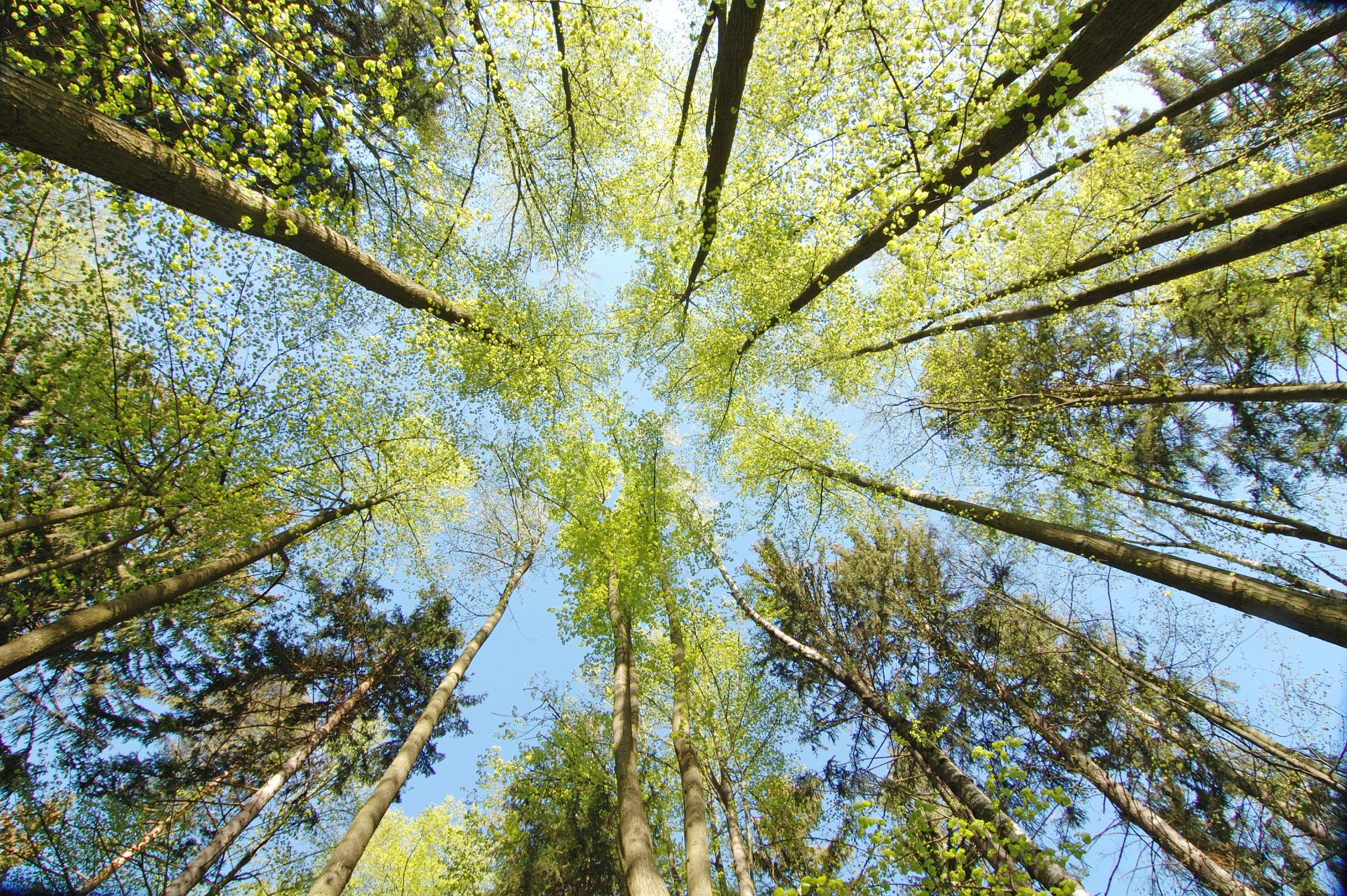
Looking up into the trees in the forest








